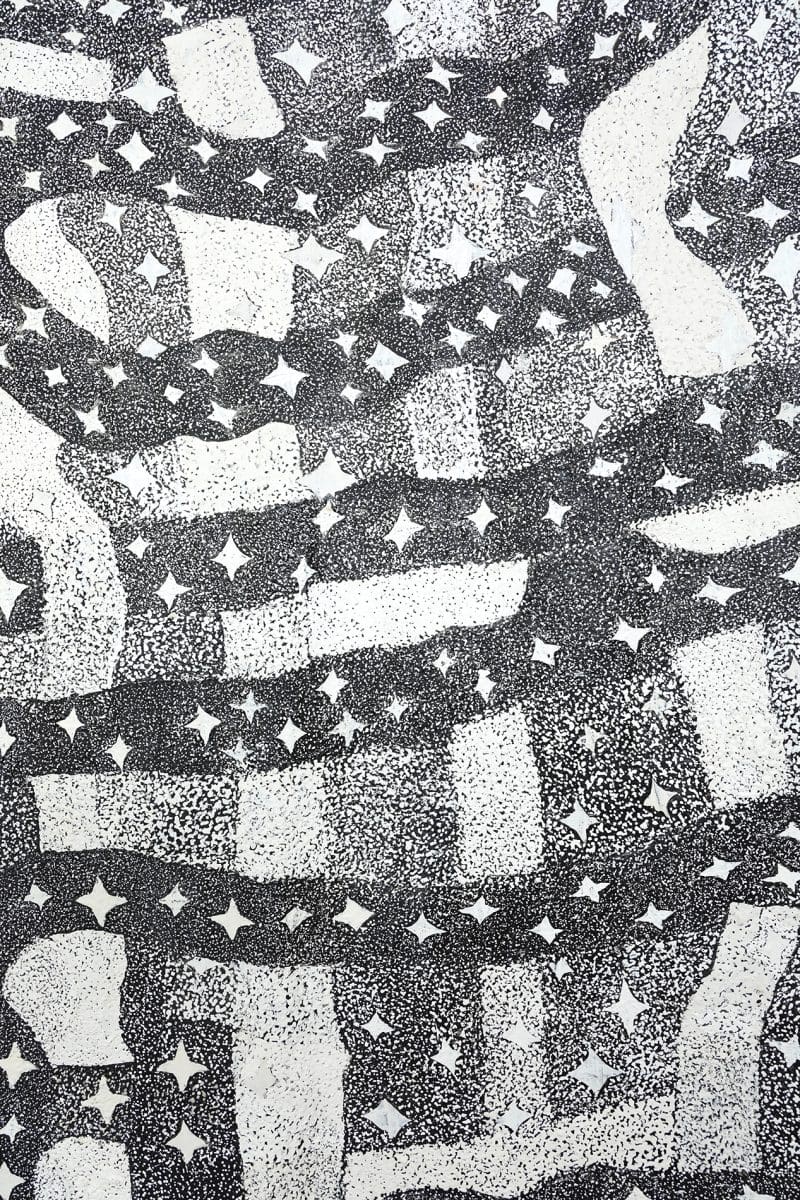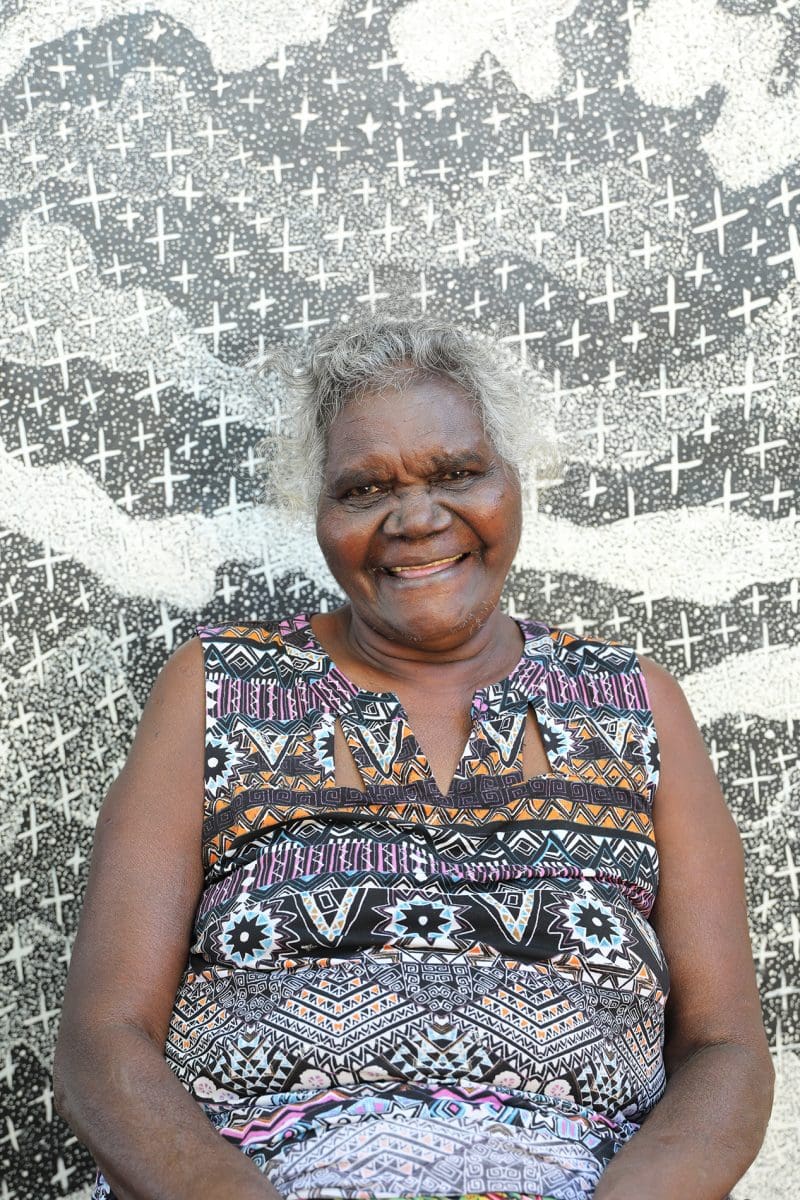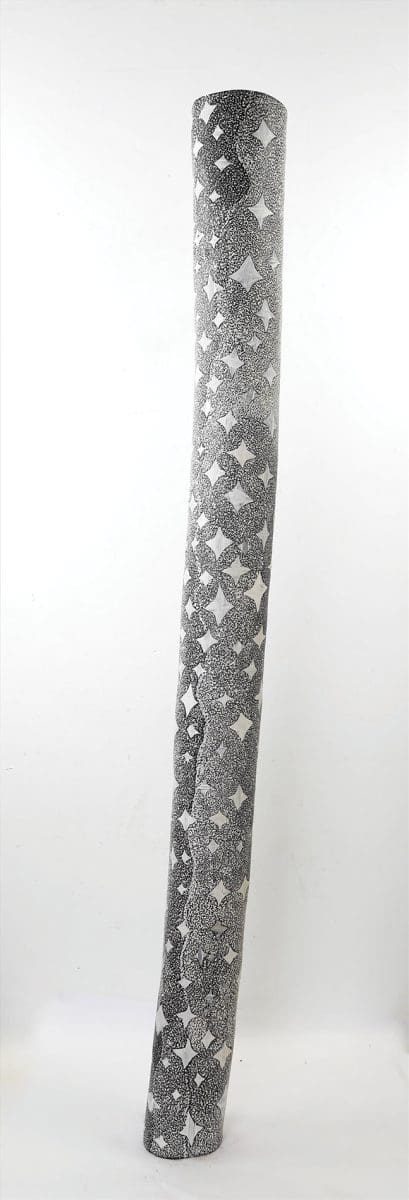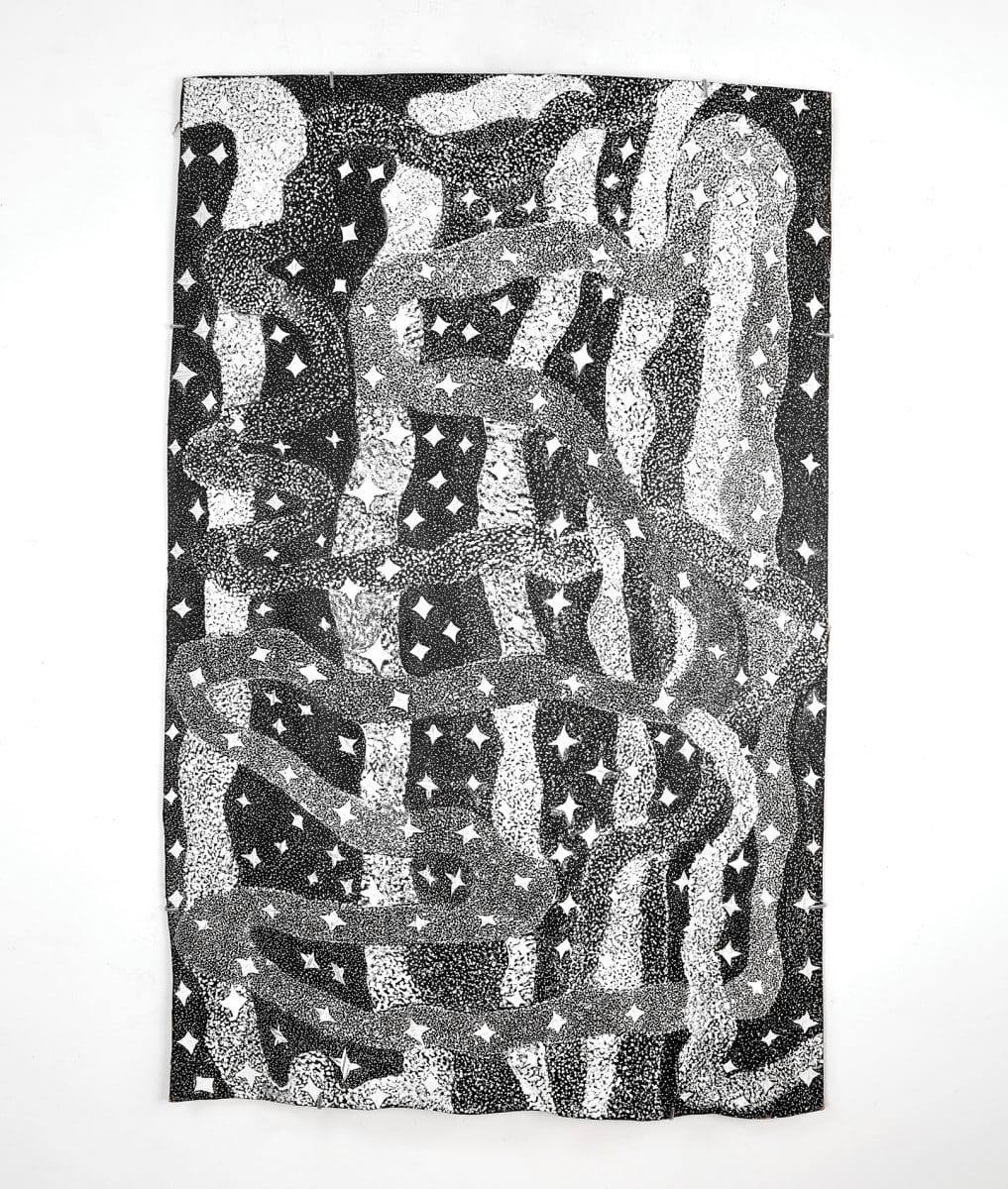
Place-driven Practice
Running for just two weeks across various locations in greater Walyalup, the Fremantle Biennale: Sanctuary, seeks to invite artists and audiences to engage with the built, natural and historic environment of the region.




A river of stars in the sky. This is what it looks like when Naminapu Maymuru-White paints Milŋiyawuy (a river that has its astral parallel in the Milky Way) in ochre on barks and on larrakitj (hollow logs). Her paintings, such as Milŋiyawuy, 2019, are cast in sublunar light: a series of larger white stars float across a tight lattice of granular white paint, which itself is set against a black and grey background on bark. These are tiny stars seen from the ground, painted in such a way that they seem like bubbles of air rising through water, popping the moment they reach the surface of the river, the bark. This is of course no coincidence—everything is connected; the sky, the ground, the river, the artist’s hand. Maymuru-White’s marks are echo forms reflecting waves of ancestral energy, spirit energy, the life force that is in everything.
This is an impression that has stayed with me since I first saw Maymuru-White’s paintings and sculptural works in her 2020 exhibition River of Stars at Salon Project Space in Darwin. It was September last year; I was in town for a couple of weeks between research assignments in Maningrida. Over a year later, I met with Maymuru-White for the first time. It’s a video call: I am in my apartment on Wurundjeri Country, she is at Buku-Larrnggay Mulka in Yirrkala. Maymuru-White is a member of the Mangalili clan, and was born in 1952 in Yirrkala where she lives and makes art.
I asked her how she became an artist, a question that I ask every artist I interview. For Maymuru-White the story of how she learned to paint is the story of who she is: it’s also a crucial part of the history of both the Yirrkala art centre and of bark painting. She tells me, “I learned by watching my father paint.”
Her father Nänyin and his brother, Narritjin Maymuru, were artists who from the 1950s to 1970s were deeply involved in the development of bark painting and introducing Yolŋu creative practices to the art world. Narritjin established a studio and private gallery in a shed on the beach at Yirrkala, and he also set up the Mangalili clan’s homeland centre, Djarrakpi. In many ways bark painting and the homelands movement, which began in the 1970s, are intrinsic to one another. Both are rooted in deep ancestral connections to and knowledge of Country.

It was through her father and his brother that Maymuru-White was taught to paint miny’tji (sacred clan designs), making her one of the first Yolŋu women to be given the permissions by Elders to do so. This marked a shift in Yolŋu creative practice, the beginning of a period of artistic innovation that continues today.
Will Stubbs, coordinator at Buku Arts who is on the interview with Maymuru-White, helping to translate, says she’s been “painting every day for the past 50 years.” This is a modest compliment; in 1996 her triptych Nyapilingu won the Telstra National Aboriginal and Torres Strait Islander Art Award for ‘Best Work on Paper’ and in 2005 one of her Milŋiyawuy memorial poles won the Wandjuk Marika Memorial 3D award. What Stubbs is getting at is the core of the artist’s practice: Maymuru-White has painted the same inherited miny’tji, Milŋiyawuy for decades. And it is with this deep, situated study that innovation occurs, through subtle shifts, atmospheric observations, slight variation.
I keep thinking about Milŋiyawuy, one of Maymuru-White’s 2019 larrakitj (hollow logs). It’s 190 cm tall and is painted in textural white ochre, little beads of ochre that join in places while leaving some empty space to form a pattern. It looks like a constellation or the back of a shell, or those patterns that bubbler crabs make with balls of white sand on the beach. I’m fixated by the way she has carved morning star-shaped holes into the hollow log. So, depending on where you’re standing in relation to the sculpture, you can see the light shining right through the holes, or the dark belly of the log. The work is simultaneously a study of light, space and time, prompting the viewer to seriously contemplate the ways these concepts take form and bear upon perception. But it is also—and foremost—Milŋiyawuy.
Milŋiyawuy is a central element in the understanding of Sky Country, as well as Mangalili being and belonging in Mangalili homelands. It relates to Guwak, the ancestral beings that led Maymuru-White’s clan Mangalili to Djarrakpi (in Northeast Arnhem Land). Guwak is also, as relayed in Song Spirals: Sharing Women’s Wisdom of Country Through Songlines, “someone’s spirit when they pass away”. Here, “Guwak takes the spirit back to join the ancestors in the River of Stars”. A call is heard when the recently passed arrive, an echo in the “Sea of Stars that lives on earth … The echo bounces from the river to the sea resonating between them.”
Maymuru-White gives form to this echo, everything it transmits. She is a vital artist, whose bark paintings and larrakitj have deep cosmological implications and test the thresholds of how we perceive the multi-dimensional layers of Country.
Milŋiyawuy—The River of Heaven and Earth
Naminapu Maymuru-White
Sullivan+Strumpf
3 February—12 March
This article was originally published in the January/February 2022 print edition of Art Guide Australia.